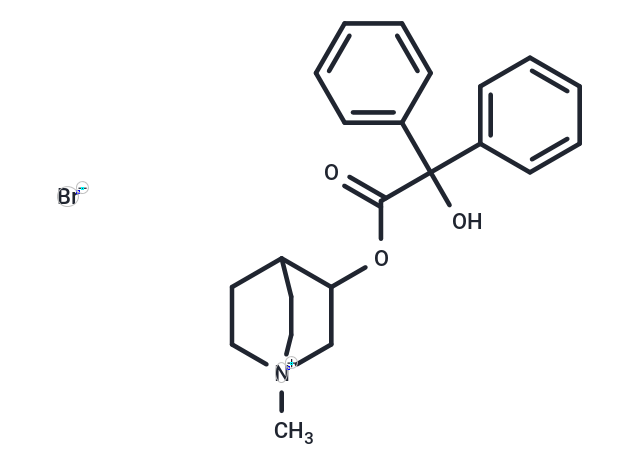Shopping Cart
- Remove All
 Your shopping cart is currently empty
Your shopping cart is currently empty


| Pack Size | Price | Availability | Quantity |
|---|---|---|---|
| 50 mg | $33 | In Stock | |
| 100 mg | $47 | In Stock | |
| 200 mg | $68 | In Stock | |
| 500 mg | $109 | In Stock | |
| 1 mL x 10 mM (in DMSO) | $45 | In Stock |
| Description | Clidinium bromide (Ro 2-3773) , a synthetic anticholinergic agent, has been shown in experimental and clinical researchers to have a pronounced antisecretory and antispasmodic effect on the gastrointestinal tract. It can inhibit muscarinic actions of acetylcholine at postganglionic parasympathetic neuroeffector sites. It is used for the treatment of peptic ulcer disease and also to help relieve cramps or stomach spasms or abdominal due to colicky abdominal diverticulitis, pain, and irritable bowel syndrome. |
| Alias | Ro 2-3773 |
| Molecular Weight | 432.35 |
| Formula | C22H26BrNO3 |
| Cas No. | 3485-62-9 |
| Storage | Powder: -20°C for 3 years | In solvent: -80°C for 1 year | Shipping with blue ice. | |||||||||||||||||||||||||||||||||||
| Solubility Information | DMSO: 45 mg/mL (104.08 mM) | |||||||||||||||||||||||||||||||||||
Solution Preparation Table | ||||||||||||||||||||||||||||||||||||
DMSO
| ||||||||||||||||||||||||||||||||||||

Copyright © 2015-2024 TargetMol Chemicals Inc. All Rights Reserved.